NAVIGATING A NEW CHAPTER
BRIDGING, BUILDING AND GROWING A BARGE TOGETHER
When Martina passed the baton of ‘Barge Mama’ on to me earlier in the year, I remember feeling both excited and daunted. Although I grew up by the water, I had no experience of living or working on a boat; this was as much new territory for me as it was for Global Generation.
I also felt the weight of honouring the different visions and ideas of everyone who had played a part in the barge’s story so far. From the young people who took part in the initial co-design programme in 2020, to Jan Kattein architects who then adapted their ideas into a design, and to Martina, Nadire and Abena who had begun co-creating different elements of the barge with the Generators and groups of Islington young people. How would I carry forward the next chapter of the barge’s transformation? How would we balance the involvement of young people and the expectations of our funders along with finding a way to make it all happen in time for our launch event in October?
With all this whirring through my mind, and with the support of Nadire and a team of fellow makers, we embarked on a summer programme of making involving Islington young people. We made habitat boxes and bug hotels to invite other species onboard. We harnessed the power of the sun’s rays to create cyanotype prints that will later be stitched together into new curtains for the classroom. And we made bespoke panels for our roof deck using branches from apple and cherry trees that came to us as prunings from a gardening job.
SUMMER OF MAKING
Habitat box making
Photo by John Sturrock
Cyanotype session on the barge
Bug hotel making
Photo by John Sturrock
It wasn't all plain sailing. We were learning by doing, experimenting with different techniques and materials. Then there were the challenges of working in one of the hottest summers on record, navigating how to run a workshop on the confines of a boat, the constant worry of something or someone falling into the canal and getting to grips with all the controls and peculiar parts of the barge. As the weeks went on, the mission to turn an old floating cinema into a garden was starting to feel like an insurmountable mountain. There was still so much to do.
Time was running out to make the planters for the roof of the barge and we were on a quest to make something extraordinary, something unique, but with what? I had roped in my partner Tom to help, a cabinet maker by trade who likes finding things in skips. He had lived on a boat as a student and seemed like the perfect match for the project. Feeling almost hopeless, Tom took me over to a bench at the back of the Story Garden. It was huge, oak and heavy. I was told later that it had originally lived in Granary Square and had been donated to GG years ago. “That’s our planters!” I thought he was crazy. The wood looked too far gone, and how would we even mill it? It seemed like a reckless risk. But then I couldn’t see what he could see…The next day, Tom was there with his chainsaw cutting into the bench to reveal planks of oak with the most beautiful patina, just like ripples in water. At that moment I could have cried. Somehow the possible came out of the impossible, a river of hope, like our imaginings of the mythical dragon Taniwha carving through tarmac to reveal the buried Fleet.
It sounds surreal, but it almost feels like the bench had been sat there for all those years in the Story Garden, not sad, forlorn and neglected, but simply waiting for its moment, its calling. In Tom’s words, the bench needed that time to rest and relax, to gain its character. The oak bench was returning to Granary Square in a new form.
I started to realise what beautiful magic can happen if we allow the materials to call to us. Working with reclaimed materials is unpredictable but they invite us to be inventive. There is joy in breathing life back into something discarded, although there is nothing revolutionary about it; the core values of a circular economy are rooted in our ancestral past. I am reminded of how much waste exists in modernity’s quest for creating new things, but how it doesn’t always have to be this way. The city’s ‘trash’ is awash with treasures waiting to be renewed again. By repurposing materials we also give reverence to the journeys they have been on, from the forest where the wood once grew to the lives of service they have provided since. As part of the summer making programme we worked with Copenhagen Youth Project to make herb planters using old scaffold boards. In the workshop we all found ourselves drawn to the boards with distinctive marks, imprints from their days on a building site.
Working with recycled materials isn’t always easy. Scaffold boards warp and cup from wear and tear. But as Sinem, one of the young people involved in our workshops said, "Nature isn't perfect". We adapt.
In the midst of all the making I couldn’t imagine the barge actually turning into a garden, let alone being ready for the launch event that was looming. I was yearning for a break. I came back from holiday to find the first plants setting down roots, planted by Generators and Fellows. Their voices in the wind whispered encouragement. I could start to imagine the bees that would happily drink from their flowers next summer, the tendrils that would slowly climb up and over the trellis of our boat, the bulbs that would emerge with new energy in the spring, the excited faces of children stepping on board for the first time and experiencing a rush of wonder. One final push was needed.
Many hands came together to add the final touches ready for our launch. Local construction companies stepped in to help; Wates organised scaffolders to finish the trellis structure and install our woven frames, Woodlands adorned the boat with festoon lighting whilst Fellows, Generators and Ambassadors eagerly dug in more plants.
The feeling of seeing it all come together was electrifying. As I watched the young people stand on the roof deck and speak in front of our Barge Club members, supporters and funders, I felt a rush of immense pride in why and how we do what we do.
Now that we have begun to inhabit the Floating Garden, I’ve come to see it as a bridge between past, present and future, between different people, different worlds and geographies. There is a bohemian edge and scruffiness to the canal that sits in beautiful contrast to the glitzy, shiny side of King’s Cross. We’ve been bagging up our offcuts of wood to give to our neighbours on the other canal boats to keep their fires burning over winter. Life on the water can be tough but there is a warming sense of camaraderie.
There is still much more work to be done and there is still so much to learn about maintaining a boat! But for now it feels right to take a moment to celebrate.
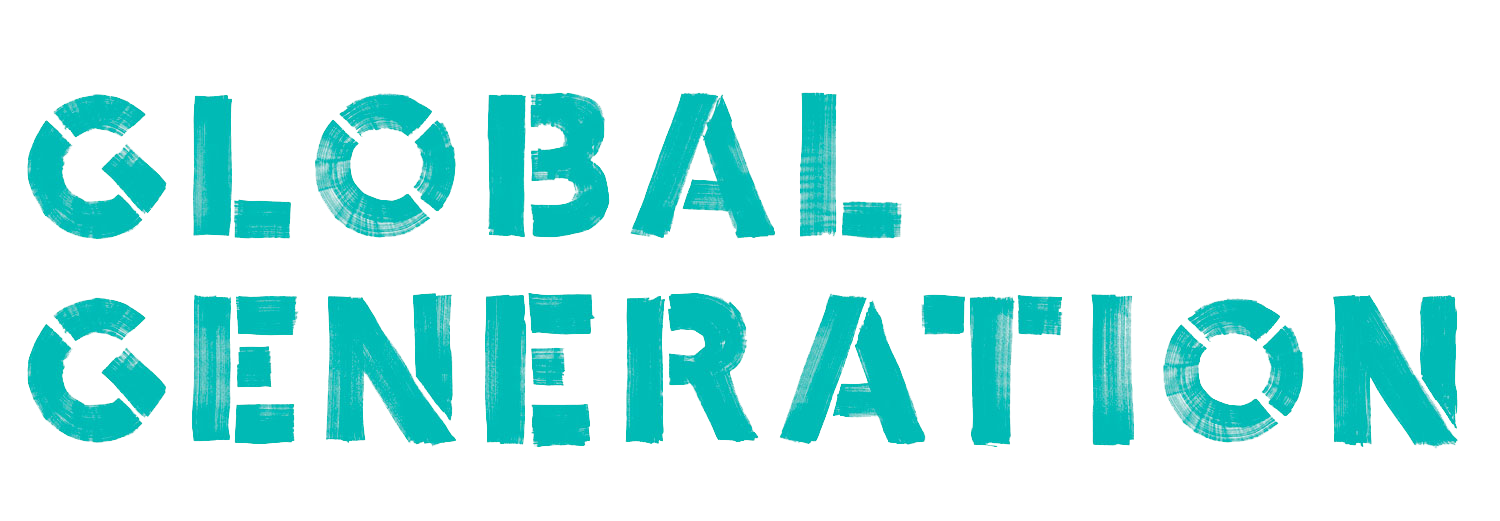

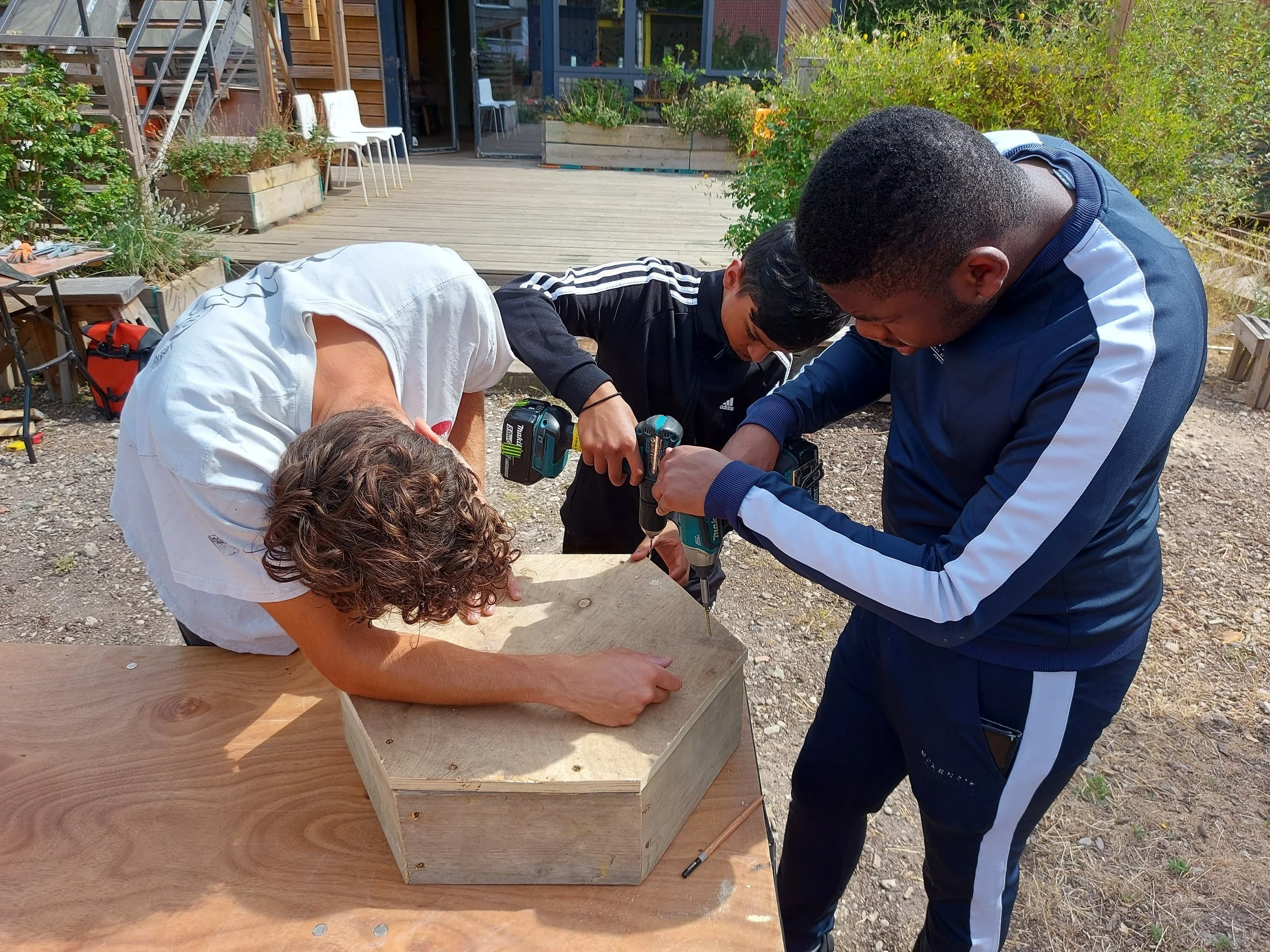

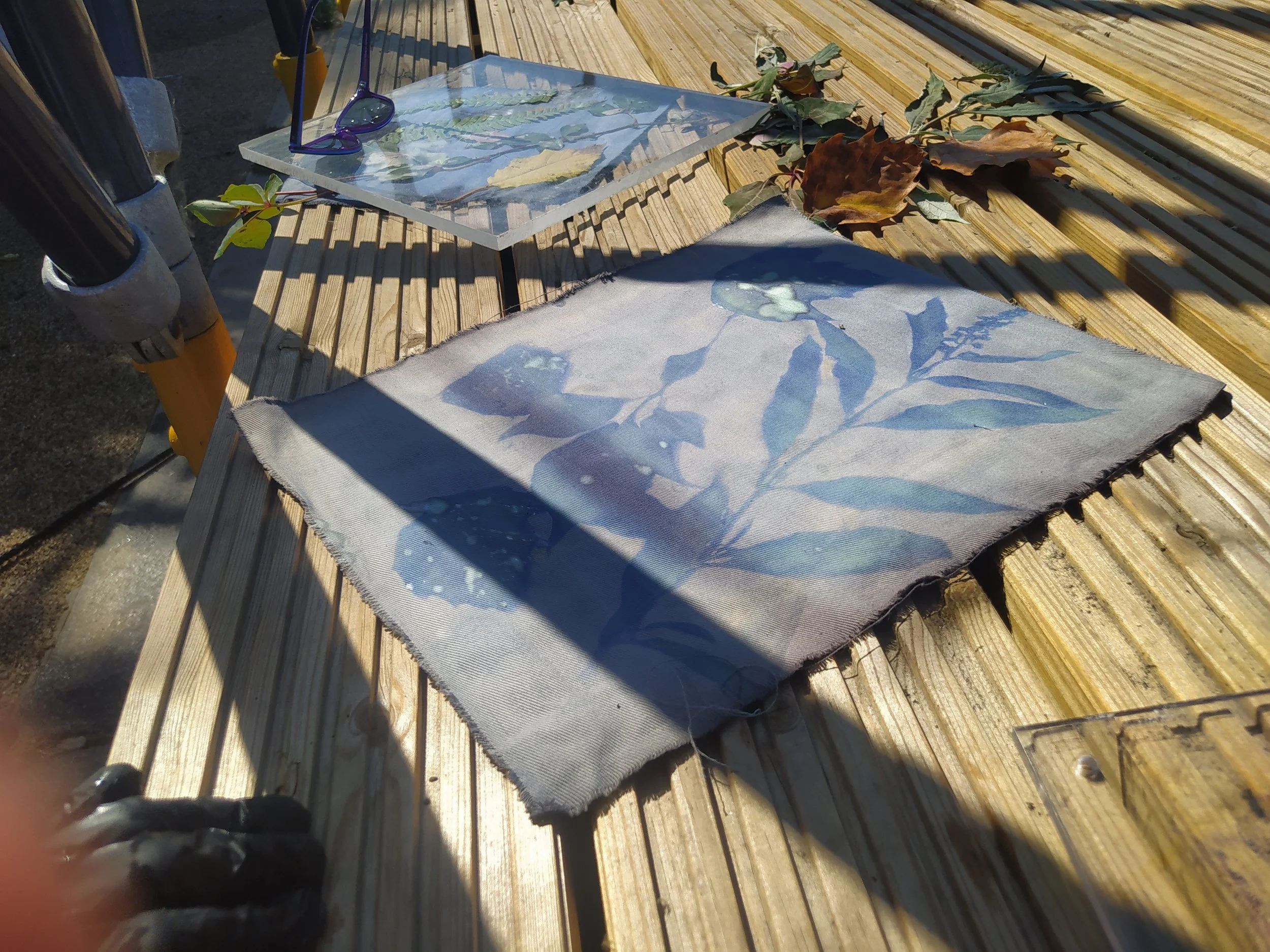
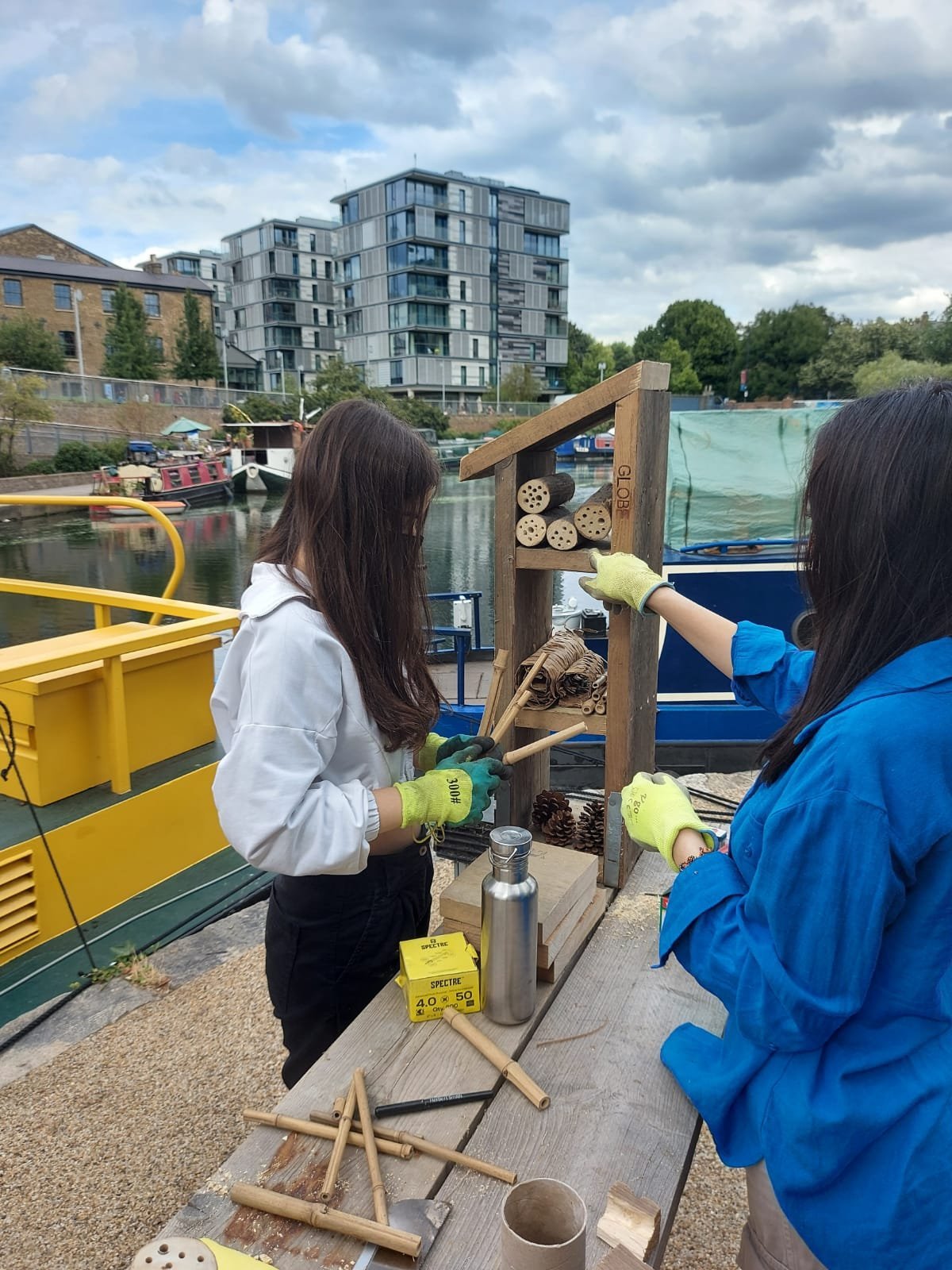

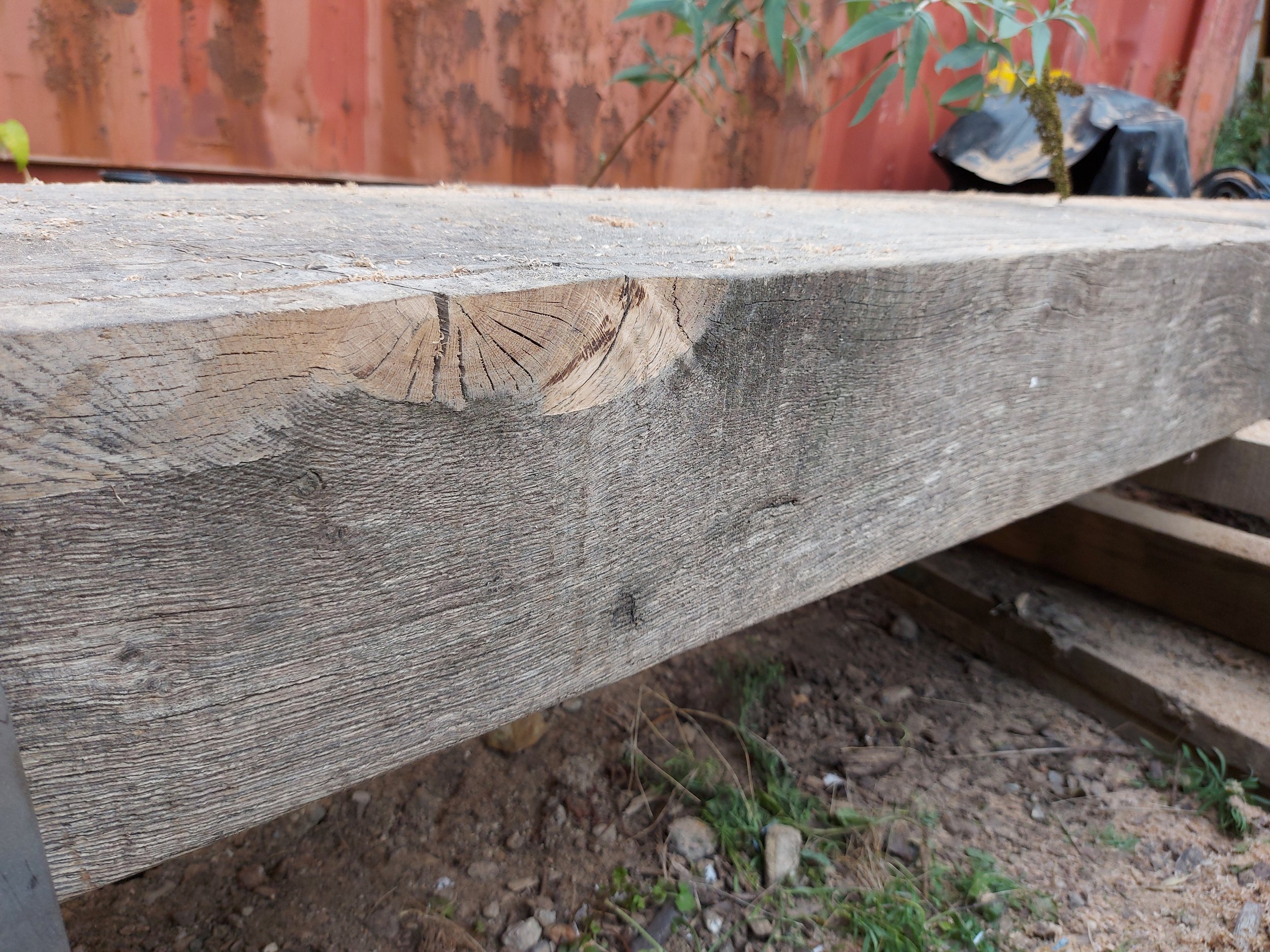
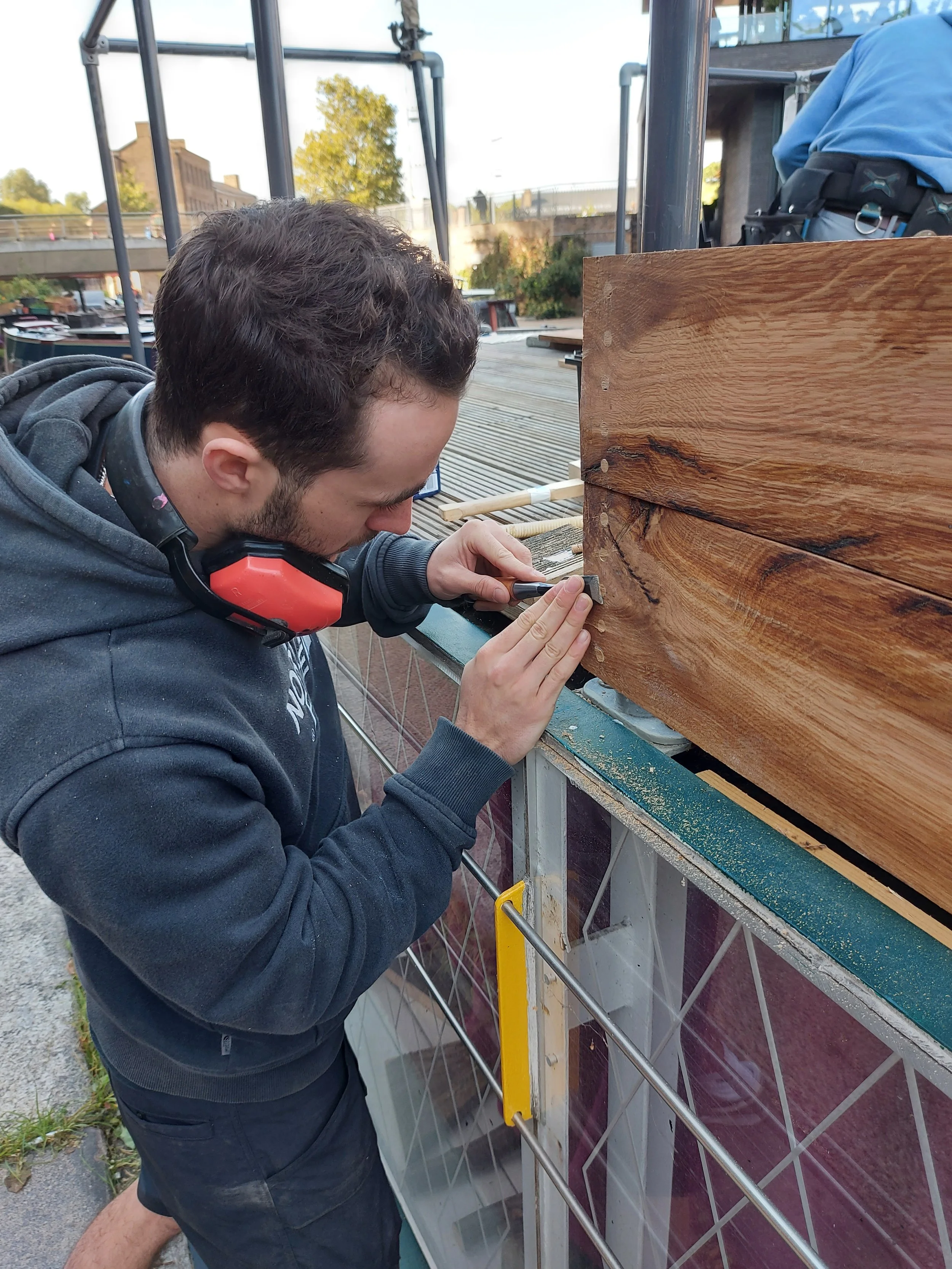
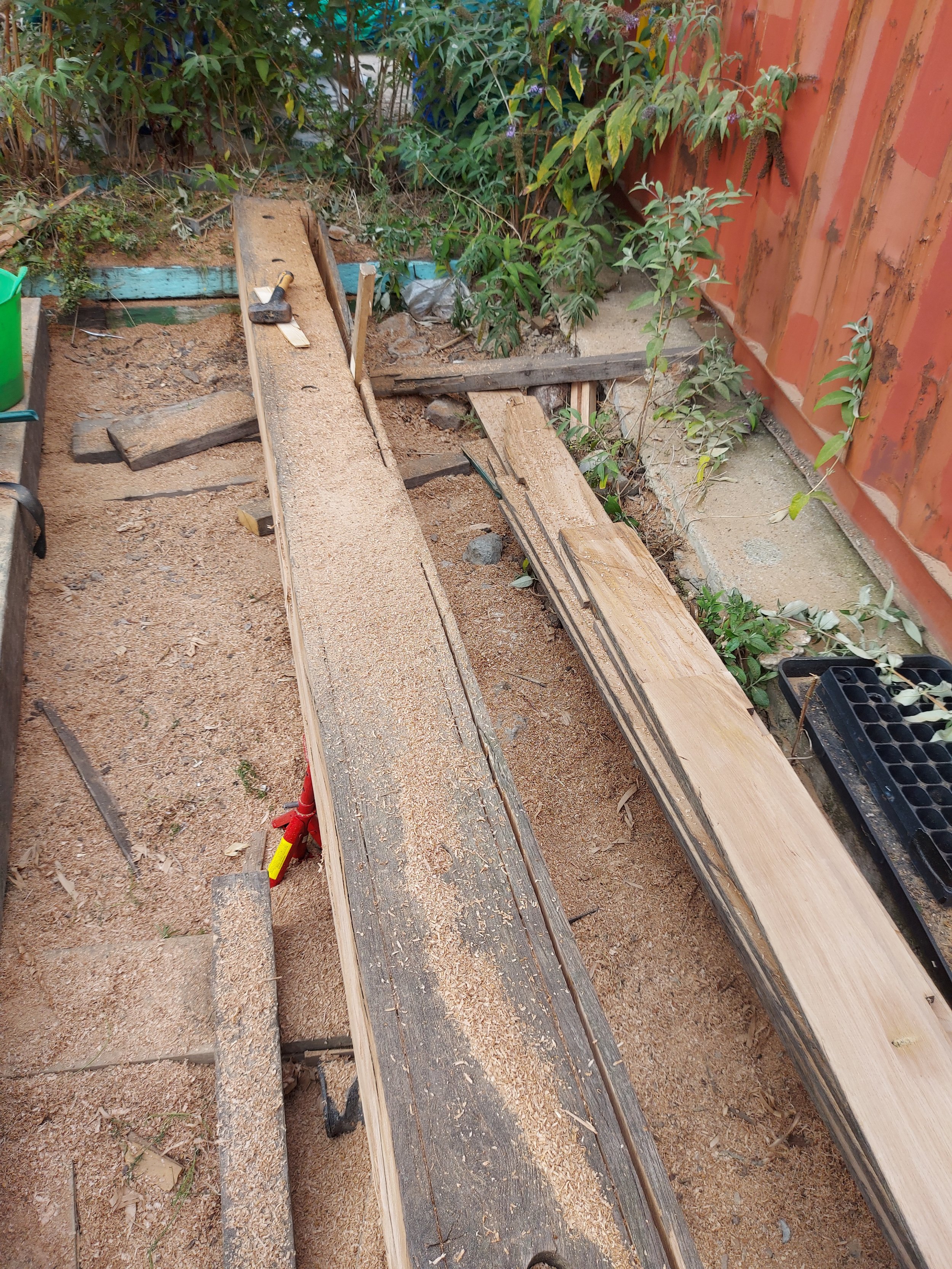
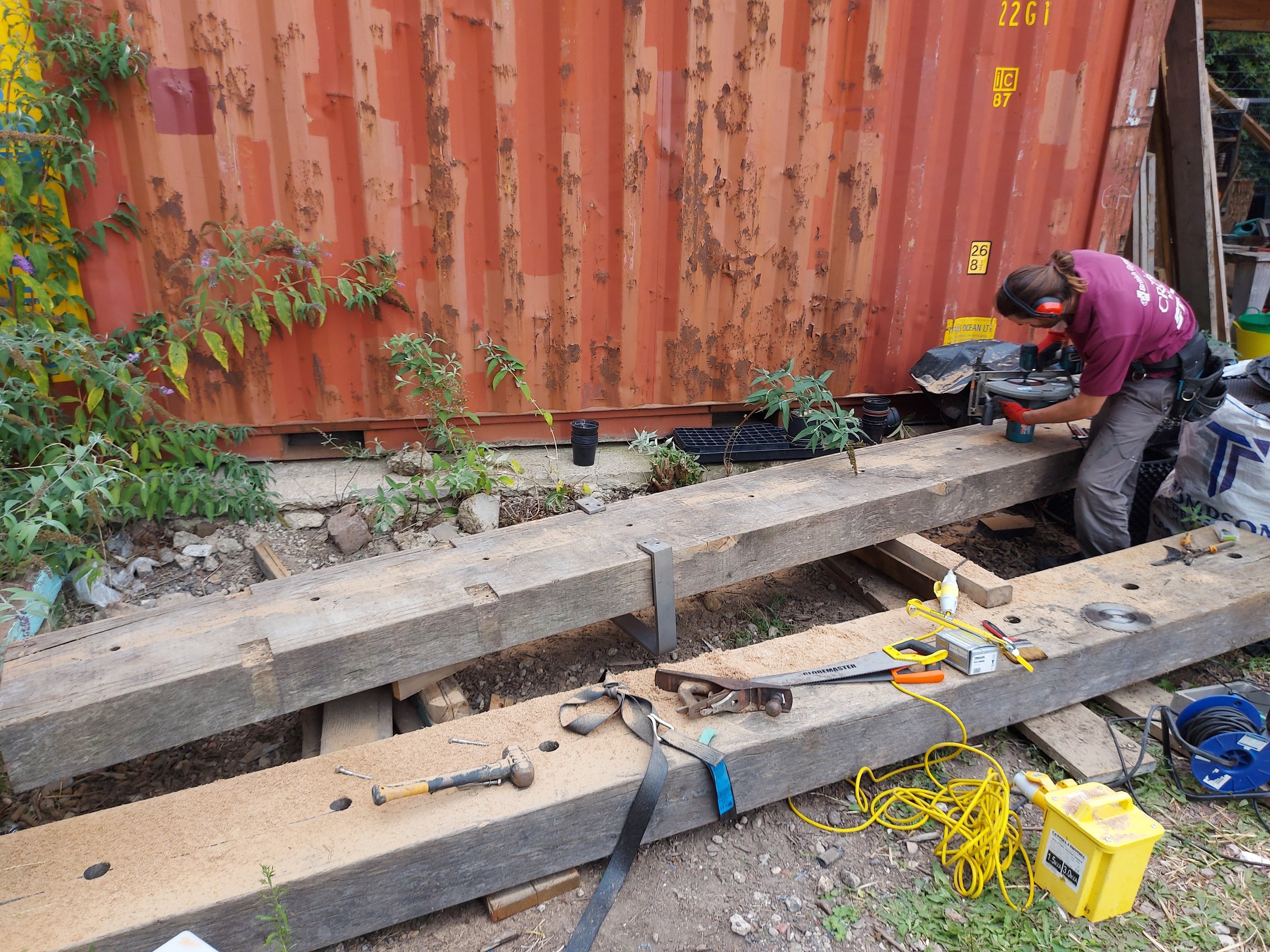
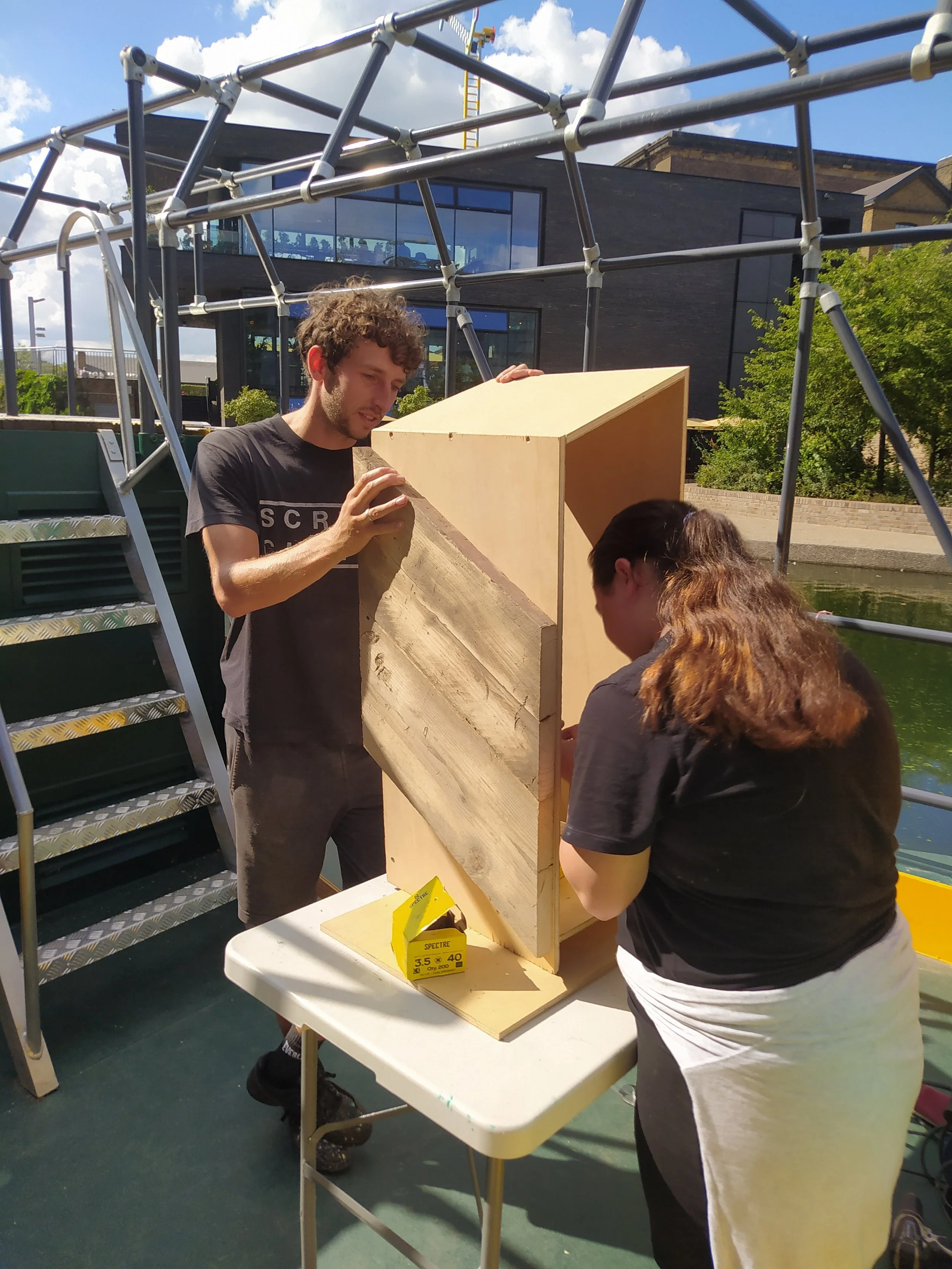
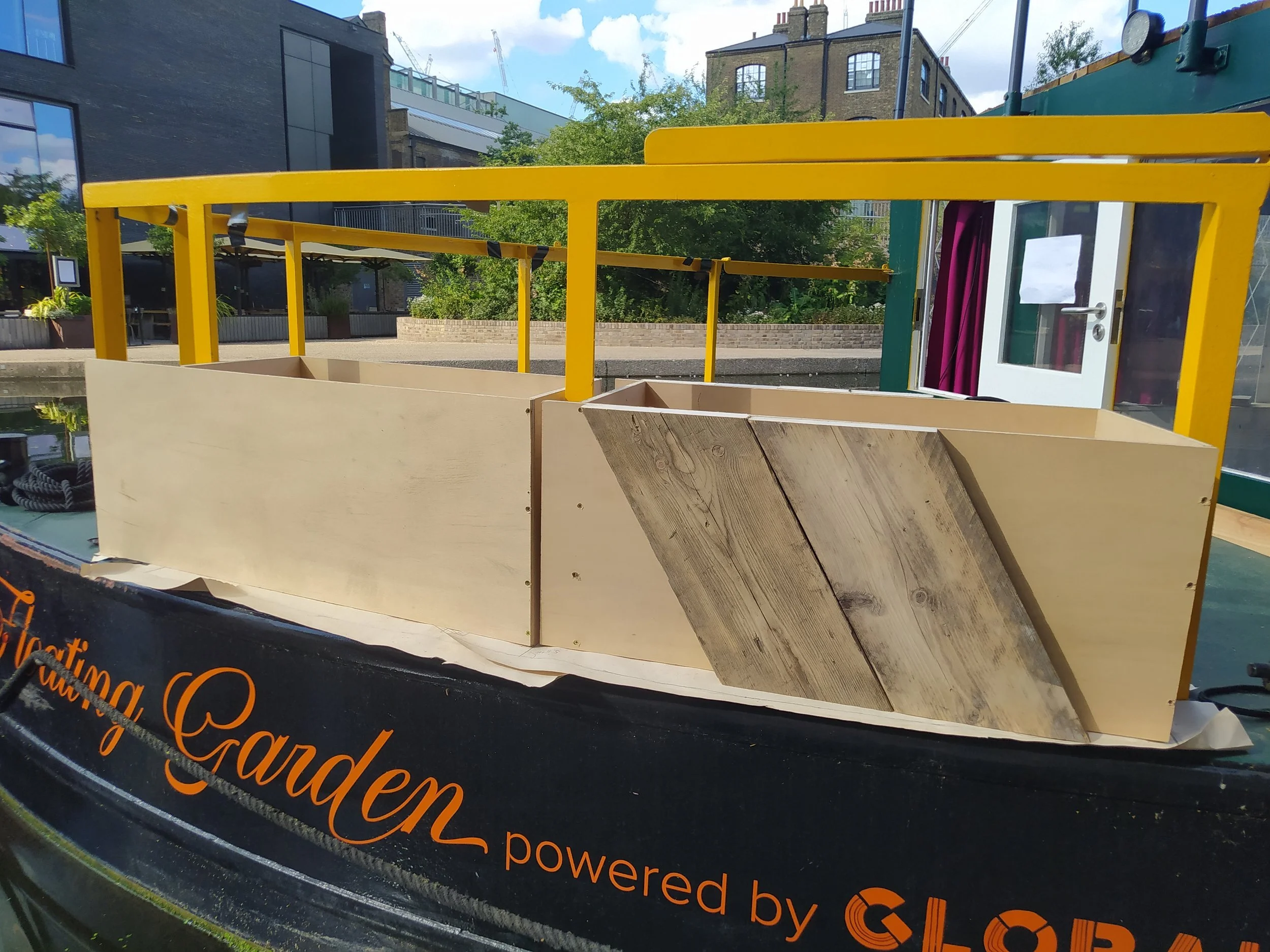
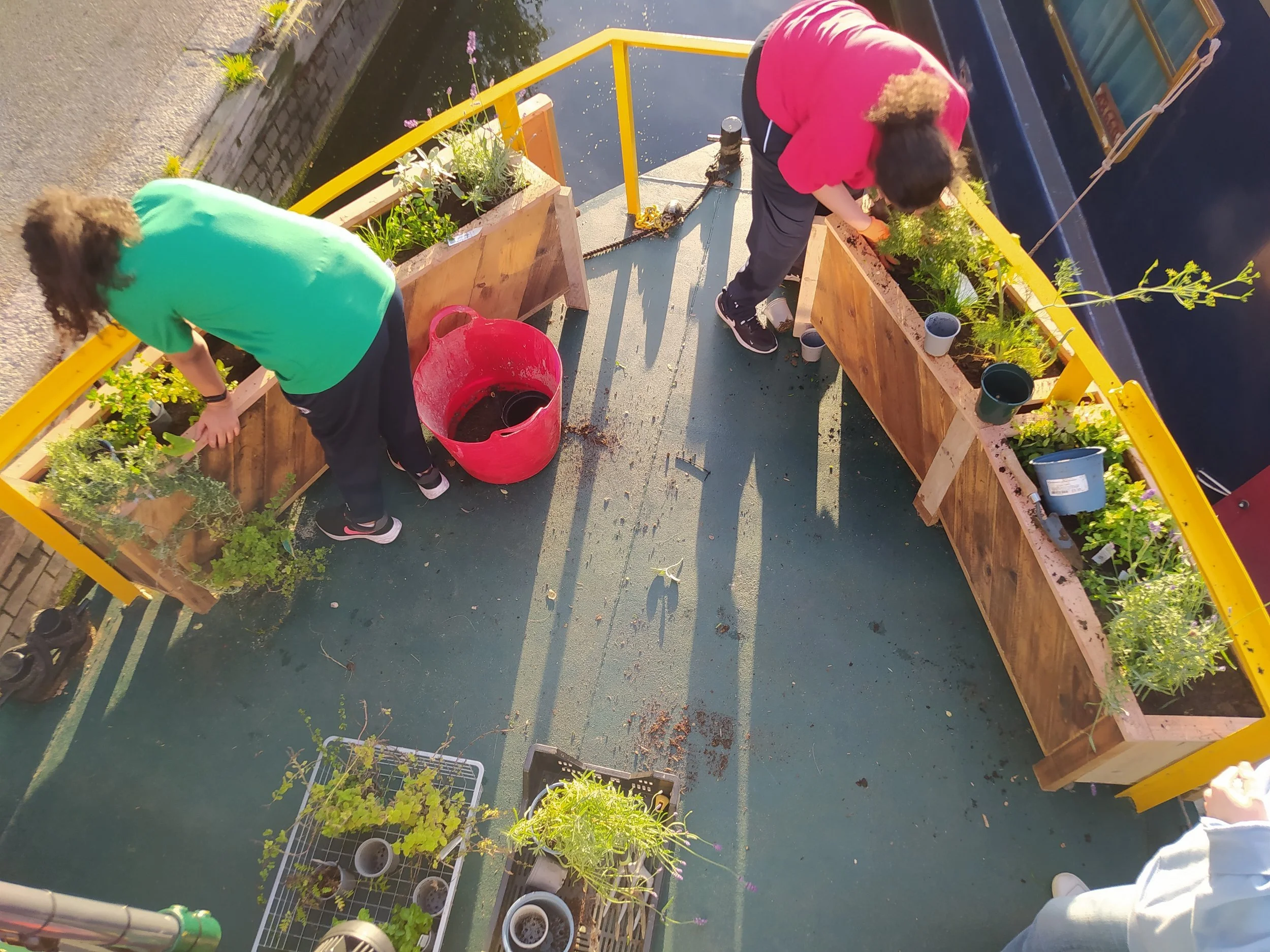
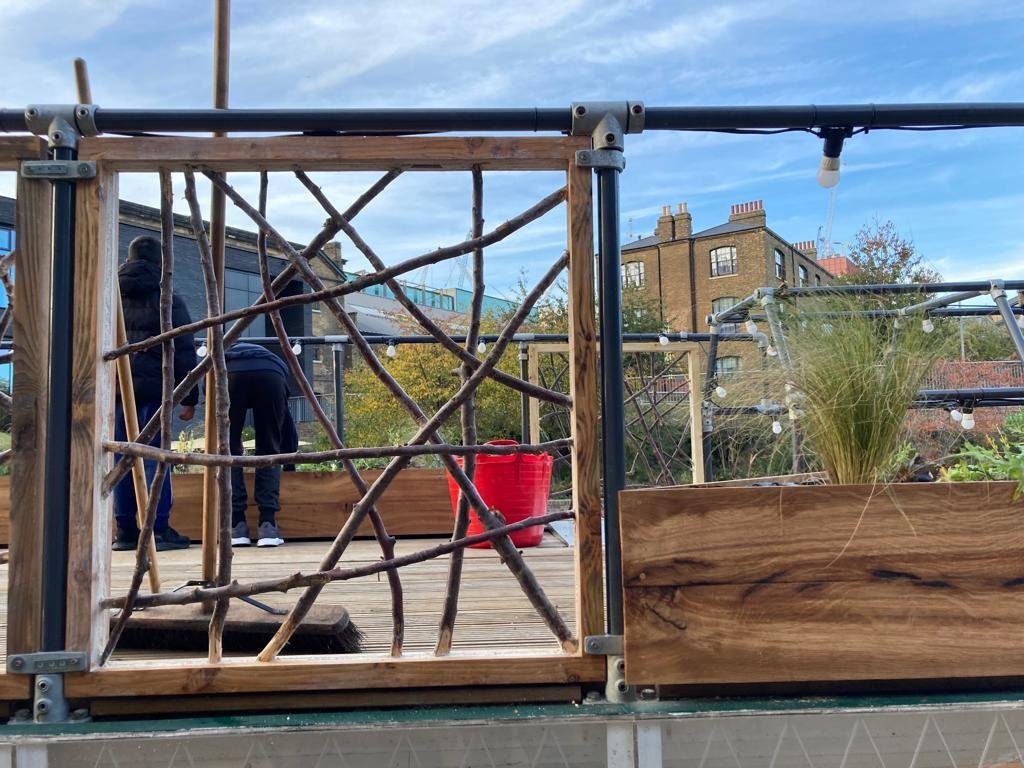

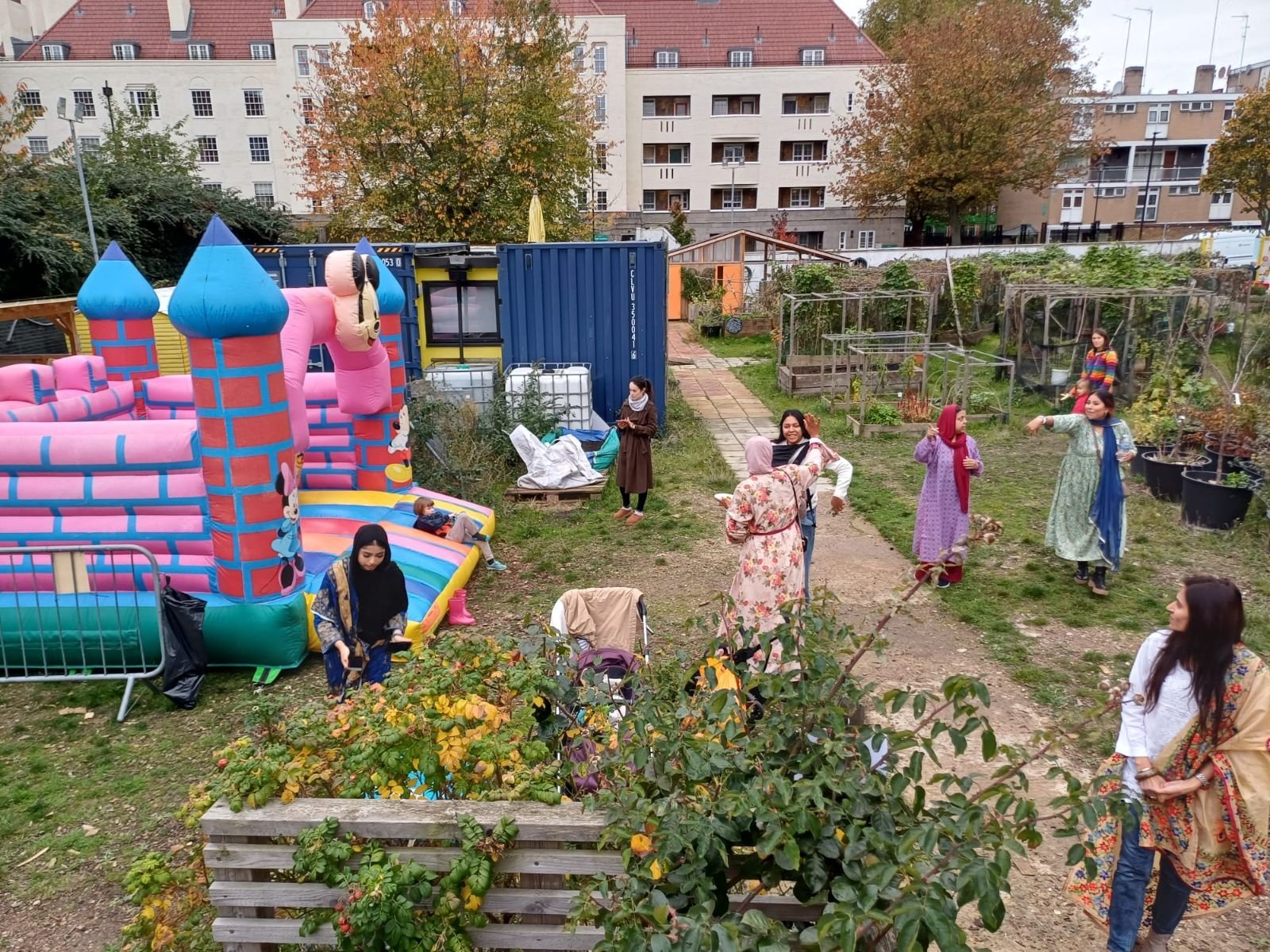

Meet our second cohort of earth build trainees! Their focus has been on all things wood, including green woodworking and the timber construction of the kitchen. They have learned on the job, while working on our sustainable natural build construction project to create our first permanent community garden, at the #TriangleSite.